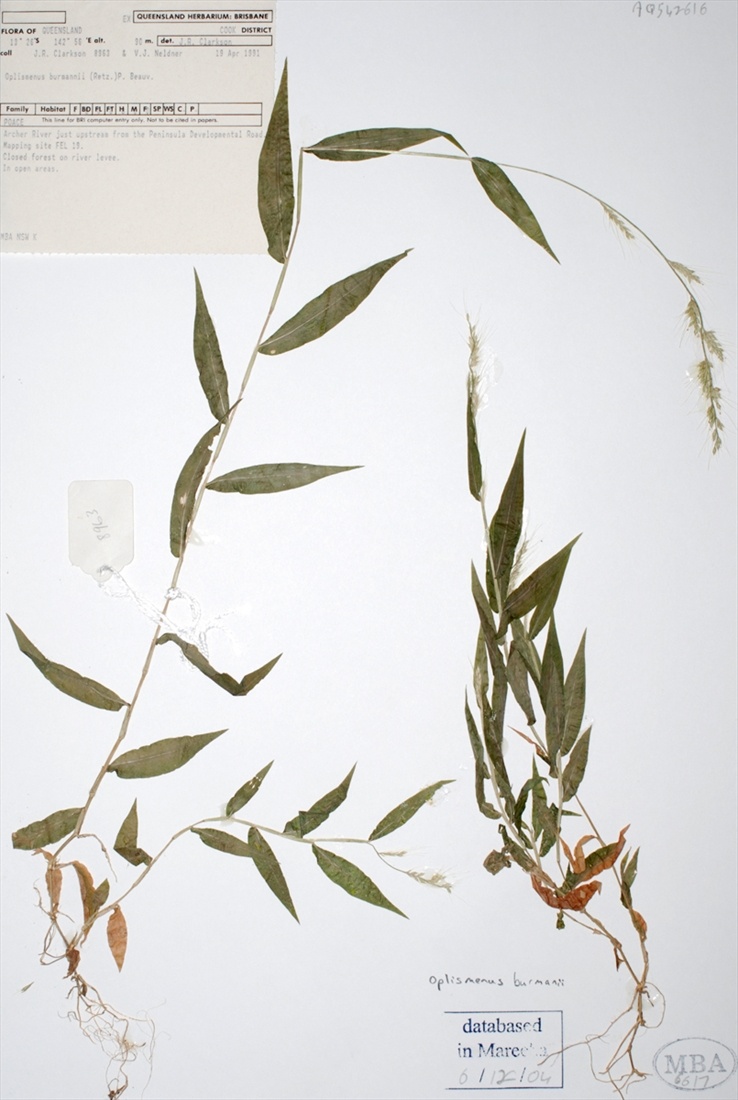Australian Tropical Rainforest Plants - Online edition
Oplismenus burmanni (Retz.) P.Beauv.

Palisot de Beauvois, A.M.F.J. (1812) Essai d'une Nouvelle Agrostographie 54: 170.
Annual with prostrate culms 10-60 cm long and rooting from the lower nodes. Nodes with silky hairs.
Leaf-blades lanceolate to ovate, 10-90 x 5-20 mm; thinly textured, leaf-blade venation with obscure cross veins, base asymmetrical. Leaf-sheath prominently veined, with silky hairs on margin of sheath, 20-30 mm long. Ligule a ciliate membrane ca. 1.5 mm high.
Inflorescence consists of a secund raceme of spikes each containing ca. 7 flowers or spikelets. Rachis triquetrous and with long silky hairs. Pedicels with long silky hairs. Glumes 3-veined. Outer glumes ca. 1.5 mm long, awn ca. 2 mm long (reddish). Outer glumes clothed in long silky hairs. Inner glumes 2-2.2 mm long. Awns 10-15 mm long and minutely scabrous. Lemna glabrous. Stigmas red, plumose.
Caryopsis greenish cream coloured, very glossy and smooth, pointed at both ends.
Features not available.
Occurs in the NT, CYP and NEQ. Altitudinal range from near sea level to 1500 m. Grows in rainforest margins, monsoon forest, Melaleuca forest, vineforest, vine thicket and Corypha woodland. A shade-loving species. Also from Africa, Macaronesia, Caucasus and Arabia, India, Indo-China, Malesia, Pacific Islands, Mesoamericana, Caribbean, northern South America, western South America, and Brazil.





